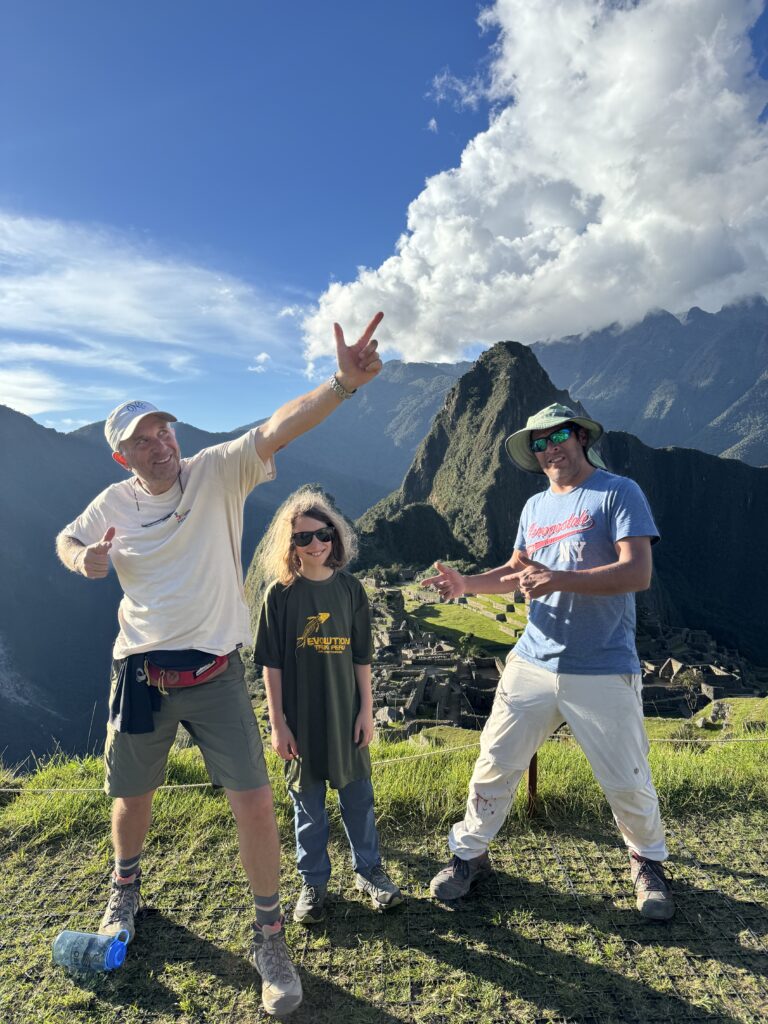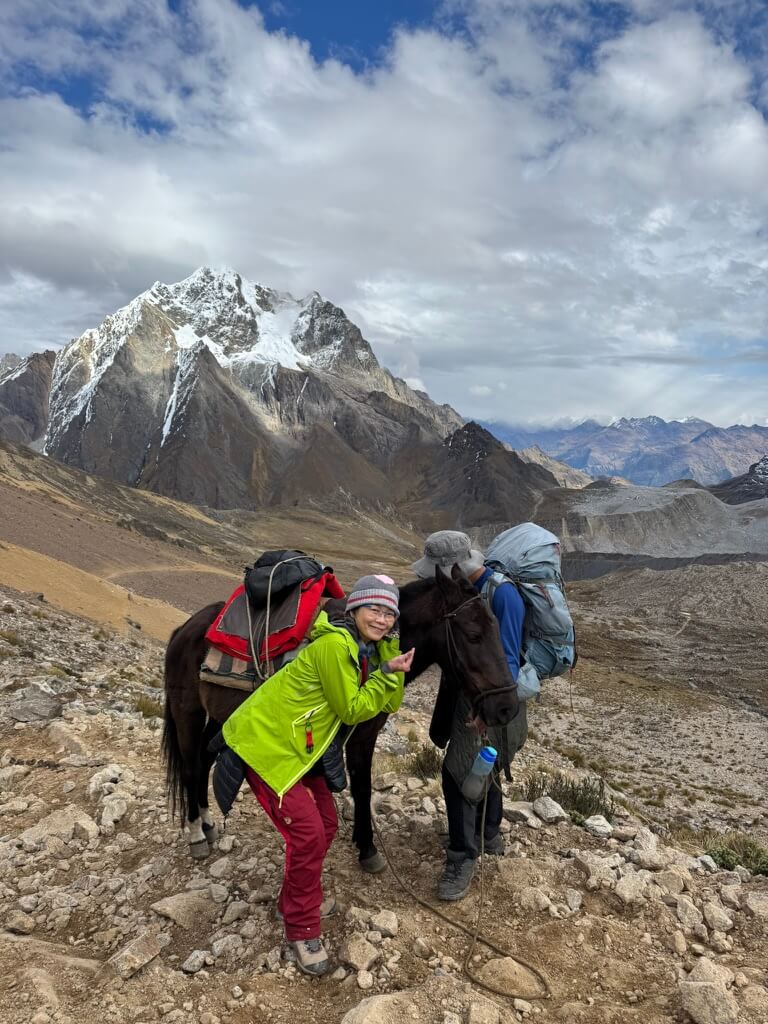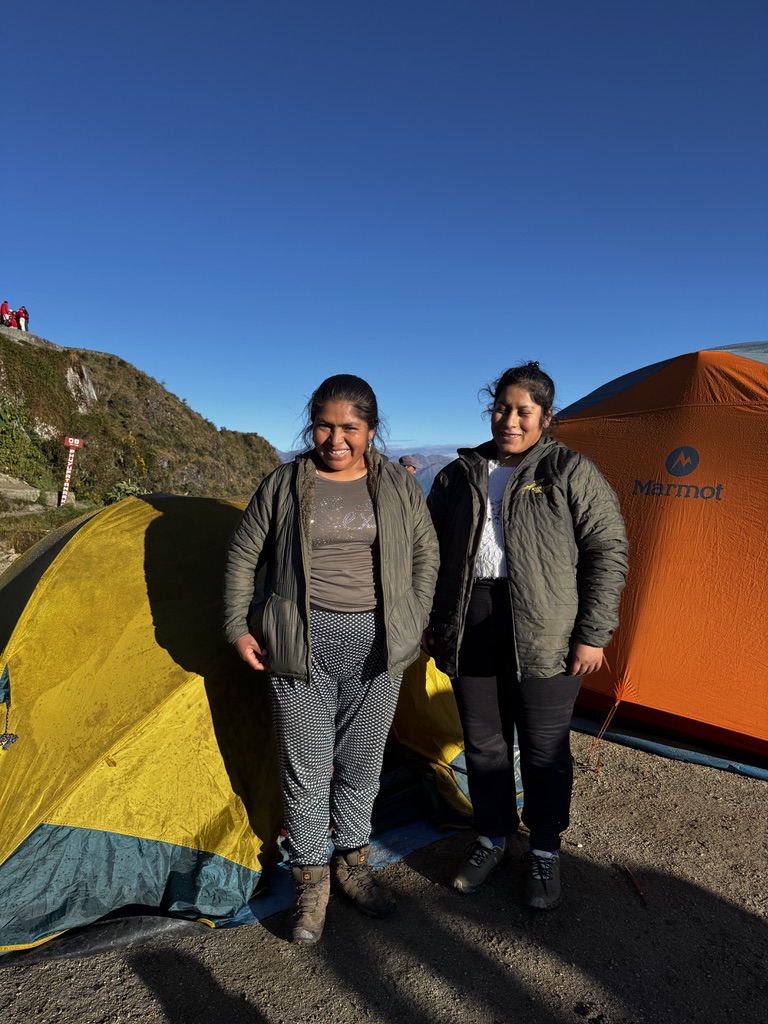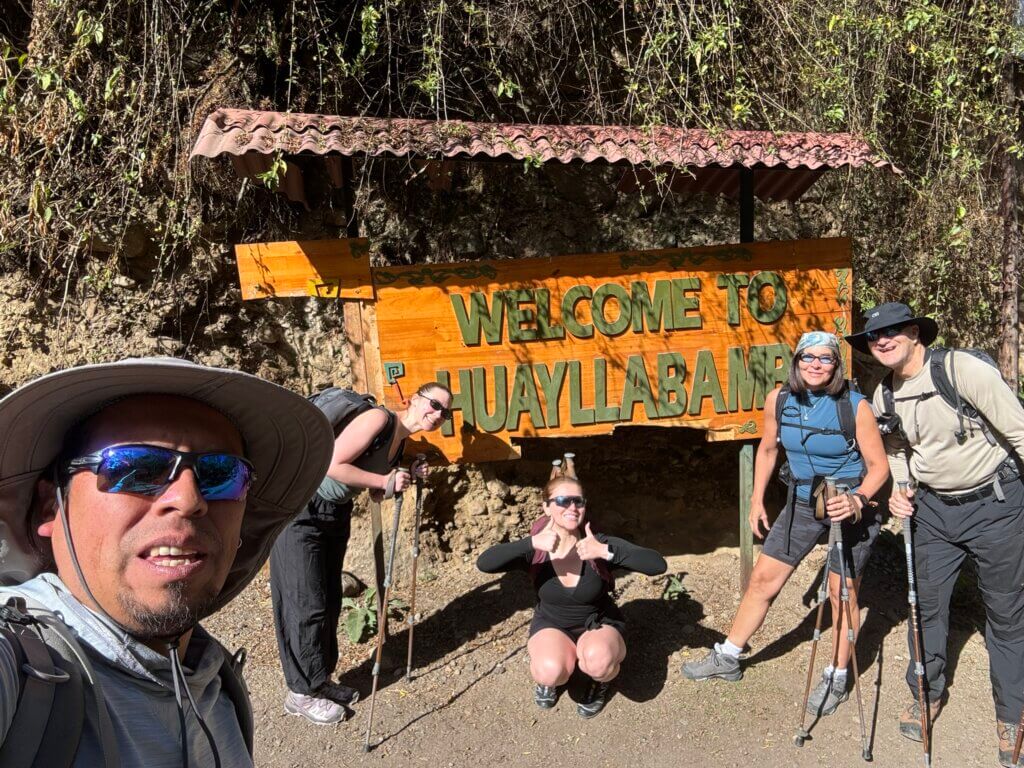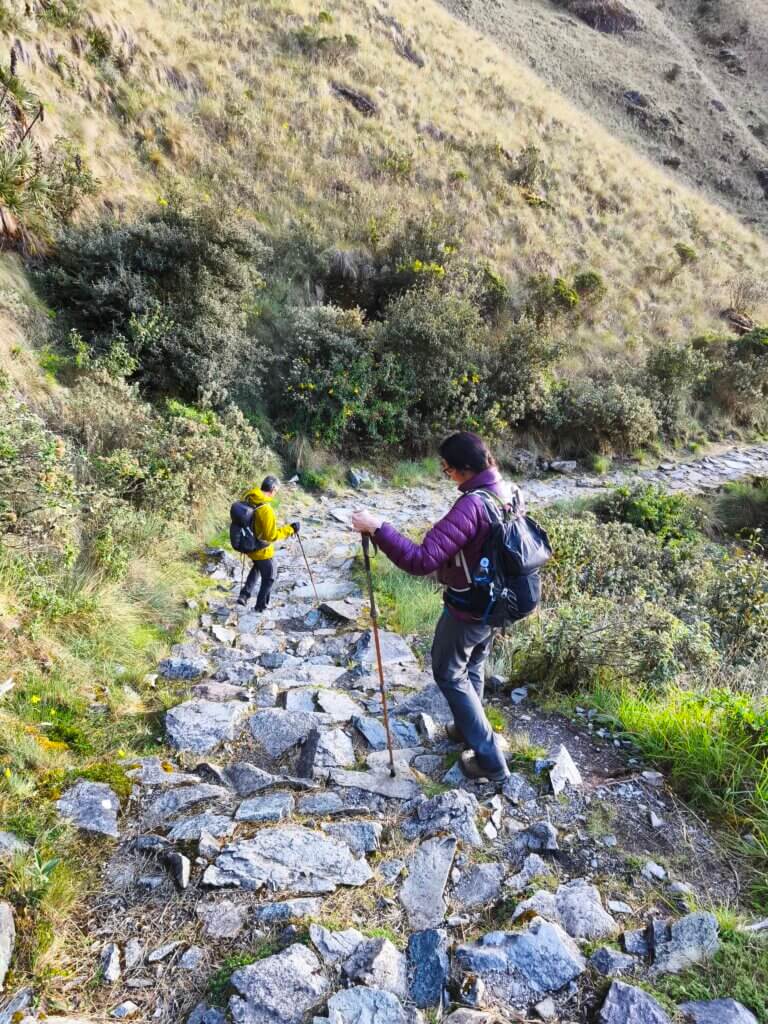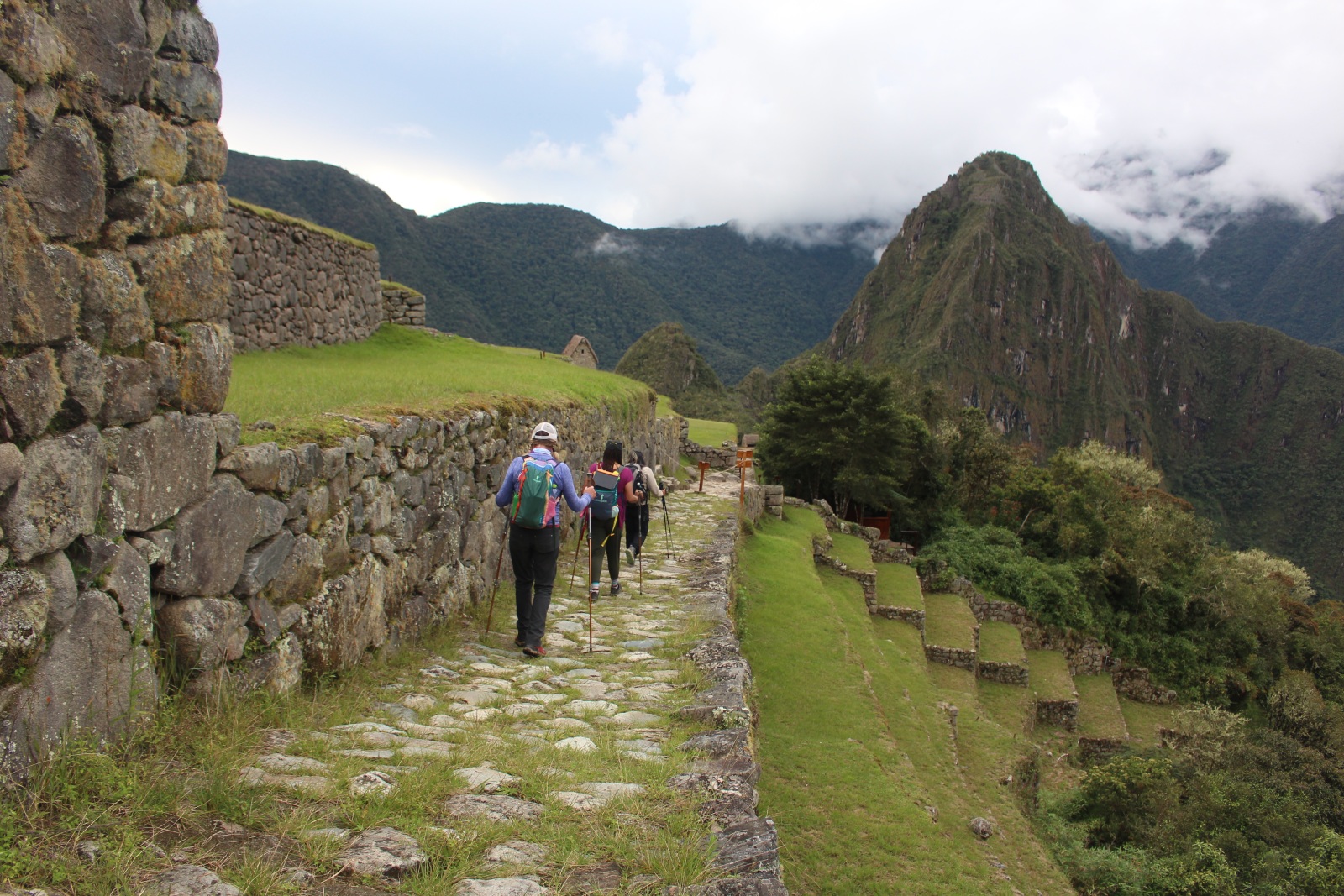
What NOT to Do on the Inca Trail: 16 Hard-Earned lessons from hiking to Machu Picchu for 30 years.
By Miguel Angel Gongora Meza, Evolution Treks Peru’s Co-Founder
Introduction: The Mountains Talk — If You Listen
I’m Miguel Ángel Góngora Meza, and for more than three decades, I’ve walked these trails as a guide, porter ally, and occasionally the unofficial therapist of hikers who realize on Day 2 that the Andes don’t care about their gym membership. I’ve seen first‑time trekkers who arrive nervous and leave with tears of joy at the Sun Gate, and I’ve seen others who had to turn back early, not because they were weak, but because one small mistake became a big problem at altitude.
The difference between those two stories is not luck. It’s preparation, respect, and the willingness to listen to your body, to your guides, and to the trail itself. So consider this your friendly, slightly cheeky warning label from someone who has seen the mountains in all their moods.
Mistake #1: Underestimating the Physical Demands
The Inca Trail and other Andean treks are stunning — until your lungs suddenly feel too small, your knees start negotiating for a lawyer, and your legs ask, “Remind me why we thought this was a good idea?”
My Story: “Gym Guy” Who Forgot Stairs Exist
One sunny morning in Cusco, Daniel walked into my briefing room like the star of a fitness commercial. Tall, muscular, new boots, brand‑new hydration pack, and a confidence level somewhere above sea level and common sense.
He told me, “I’m strong. I run. This Inca Trail hike will be a breeze.”
The mountains heard him. The mountains smiled.
On Day 2, we met the ascent to Warmiwañusqa — Dead Woman’s Pass — also known as “The Reality Check.” The Incas didn’t believe in gentle switchbacks. They believed in direct, vertical statements.
By mid‑morning, the smile had evaporated. Sweat ran down his forehead, his breathing became sharp and short, and the stone steps felt less like a trail and more like a medieval punishment device.
At one point, Daniel sat down on a rock, staring at the endless staircase above us.
“I feel like I’m climbing a ladder to the sky,” he panted.
“Welcome to Inca engineering,” I told him. “They always go directly to the point — even when the point is up.”
He did reach the top. His summit photo is beautiful: mist, mountains, a victory pose. But later, over soup in the dining tent, he confessed that he barely remembered the view up there. “I was so destroyed,” he said. “My brain was just ‘breathe, don’t die, don’t vomit.’ I wish I had trained differently.”
What I Tell My Guests Now
- Start at least 3 months in advance — and train for stairs, not just flats. The Classic Inca trail is stone steps, not a smooth park loop.
- Do weighted pack walks, so your shoulders, hips, and lower back know what 6–8 hours of carrying a daypack really feels like.
- Strengthen your legs, hips, and core: squats, lunges, step‑ups, and downhill training. The descents are often more challenging on your knees than the climbs.
- Do at least one full‑day hike with the boots and poles you’ll use on the trail, so blisters and hot spots show up at home, not at 3,800 meters.
When your legs are ready, your lungs can enjoy the views and your mind can listen to the mountains — instead of just screaming, “Why?!”
Mistake #2: Treating the Mountains Like a Jump‑Start Instead of a Slow Hello
Some people believe that if they just “tough it out,” the altitude of the Inca Trail trek will politely adjust to them. The Andes do not work like that. Altitude doesn’t care about enthusiasm, age, or how busy your itinerary looks on paper.
My Story: The Jet‑Lagger Who Thought “Sleep Is Overrated”
Sophie, a young journalist, arrived in Cusco late one evening. She was glowing with excitement and caffeine. “I want to see everything!” she told me. “I only have a few days!” So, instead of resting, she walked all over town, ate a heavy meal, texted friends until late, and posted “Just arrived in Cusco! 3,400 m, baby!” on social media.
At 4:00 a.m., when our bus lights flashed in the hotel courtyard, she walked out with red eyes, a dull headache, and the stubborn smile of someone trying to prove they’re fine.
Two hours into the hike, and still far from the Dead Woman’s pass, the smile was gone. She was breathless on easy hills, asking for coca tea, and by midday she had turned quiet and gray. On Day 2, sitting on a rock, she looked at me and said, very softly, “I wish I had just rested. I thought I could push through.”
Altitude doesn’t care how excited you are. It only cares how prepared you are.
My Advice Today
- Day 1 in Cusco: rest. Seriously. Hydrate, eat lightly (quinoa soup, vegetables, simple carbohydrates), and go to bed early, even if the city is calling you.
- Days 2–3: take gentle acclimatization walks — through the city, Saqsaywaman, and nearby hill paths. Enough to move your body, not enough to exhaust it.
- Spend a night or two at an intermediate altitude, like the Sacred Valley, between arrival and your Inca trail trek. This step‑down from Cusco’s elevation is a gift for your body.
The mountain is not impressed by how many things you cram into your first 24 hours. It rewards humility and patience.
Mistake #3: Sleeping in Cusco Instead of the Sacred Valley the Night Before the Classic Inca Trail Trek
On paper, Cusco sounds like the logical base — more hotels, more restaurants, more everything. But the night before your trek, “more everything” is exactly what you don’t need.
My Story: The Tale of Two Sisters — Weathered vs. Refreshed
On one 5‑day trek, I had two sisters: Ana and María. They loved each other, but they made very different choices.
Ana stayed in Cusco the night before. Her alarm went off at 3:30 a.m. She stumbled into the van at 3:45, hair in full rebellion, jacket half‑zipped, backpack straps twisted like a puzzle. Her water bottle banged against the seat with every turn. She looked like a zombie that had been woken up before her shift.
María slept in a small lodge in the Sacred Valley, near Urubamba. She woke up at 6:00 a.m. to see the first pink light on the mountains, had a calm breakfast, and joined our bus at a very civilized hour. She stepped in with a mug of tea, clear eyes, and a slow smile that said, “I’m ready.”
By midday, Ana was walking in silence, fighting yawns, every uphill step heavy. María was chatting, pointing out orchids, and taking the kind of photos you actually look back on later.
That night at camp, Ana told me in a small voice, “This hurts so much. I’m so tired.” María looked up at the stars and said, “This is everything I imagined.”
Why the Sacred Valley Makes All the Difference
- The drive to the trailhead is about 45 minutes from many Sacred Valley towns, not 2.5 hours from Cusco. That means more sleep and less time being shaken awake on a dark bus.
- You wake up at a human hour, not at “why is this even called morning?”
- The Sacred Valley sits slightly lower (around 2,800–2,900 m), giving your body a kinder, more gradual relationship with altitude.
Pro Tip
Turn your acclimatization into a Sacred Valley immersion:
- Visit Chinchero to see traditional textiles and natural dyes.
- Walk among the salt pans of Maras, gleaming like a hillside of mirrors.
- Explore the circular terraces of Moray, like an agricultural amphitheater carved into the Earth.
- Wander the ruins and market of Pisaq.
- Sleep in Ollantaytambo, a living Inca town, and wake up practically next to the trailhead.
You’ll start the Inca Trail rested, acclimatized, and already walking in the story of the Andes.
Mistake #4: Booking Late or Ignoring Permit and Passport Rules
The Classic Inca Trail is not a casual “show up and see” hike. It’s a tightly regulated world heritage route. Inca Trail Permits are limited, personalized, and unforgiving.
My Story: The “Almost‑Forgot” Passport Guy from France
About a month before one of my Inca Trail departures, a friendly Parisian named Julien proudly held up his passport during our online briefing. I glanced at it, and for a second, my soul left my body. The expiration date was less than 6 months from his arrival in Peru. Peruvian immigration rules are clear: your passport must be valid for at least six months beyond your entry date. Julien’s did not.
What followed was pure Mexico-Soap Opera‑level drama, played out from afar. Julien was already en route to Peru, traveling via Mexico. The chances of getting a brand‑new passport in time were close to zero. The next morning, he tore up his travel plans, rerouted himself to Mexico City, and rushed to the French Embassy to beg for a new passport. By some miracle (and probably a very kind official), he got one just a couple of days before his flight to Peru. He made the trek. He was lucky.
Others I’ve met weren’t. They arrived at the airport, were denied boarding or entry, and watched their dream trek — and all their investment — vanish because of a small date on a document they barely looked at.
My Advice
- Book your Inca Trail permits 5–6 months ahead for the dry season or popular dates. Leaving it late is like playing roulette with your dream.
- Check your passport, because your whole trip depends on it — and it does. Make sure the expiration date is more than 6 months beyond your arrival in Peru, and that the number matches what’s on your permit. If you renew or change your passport, tell your operator immediately — not “later,” not “when I arrive.”
- Get travel insurance that covers permit‑related changes, evacuations, and unexpected closures. Read the conditions carefully; some policies treat trekking and high‑altitude adventures as add‑ons rather than standard coverage.
The Inca trail is ancient, but the permit system is digital. Both demand respect.
Mistake #5: Choosing a Tour Operator Based Only on the Price Tag
Cheap offers sparkle online. But the Andes are not a place to gamble on the hidden cost of “bargains” — especially when those costs fall on porters, not you.
My Story: The Price‑Hunters vs. The Respectful Crew
One season, our group shared a campsite with another company that proudly advertised “the lowest prices in Cusco.” From our dining tent, I watched their porters arrive.
They carried monstrous bundles — 35 to 40 kilos — balanced on their backs, bound by cords and hope. Some wore old sneakers; others wore sandals. Their shelter was a thin blue tarp stretched against the wind. When a gust came through, it flapped so violently I thought it would take flight. Their faces were tired in a way that went beyond a hard day’s work.
Our trekking crew arrived later, moving quickly but in balance. They carried limited loads in framed packs, wore proper boots, fleece layers, and had sturdy sleeping tents set up for them. After dinner, I watched them share jokes, tea, and stories in their own space, with warmth and dignity.
By Day 3, the cheap group had one evacuation. Several hikers & porters were transporting an injured porter who had fallen due to the excessive weight he was carrying. Hikers were seriously upset and embarrassed, spewing a chorus of complaints about “bad vibes” and “unsafe working conditions.” My group was walking at a steady pace, joking, and occasionally singing to the mountains.
What to Ask Before Booking
- What is the maximum weight each porter carries on the Classic Inca Trail? (The answer should be between 20 to 25 kg, not more… and should include fair working conditions for them.)
- Do porters receive proper boots, clothing, backpacks, and warm sleeping gear — or just “whatever they bring from home”?
- Where do porters sleep? Under tarps, or in dedicated tents with mats and sleeping bags?
- Are women porters part of the team, and are they treated and paid fairly?
- Are guides certified in high‑altitude first aid, and do they carry proper emergency equipment?
Your experience and their working conditions are inseparable. You can’t have a wonderful trek built on someone else’s suffering, is what the BBC Travel suggests.
Mistake 6: Forgetting Bug Spray — Especially in Transitional Zones
Many trekkers assume that “high altitude” means “no insects.” The bugs in the Andes did not get that memo. Warm, humid pockets along the trail can host very enthusiastic biting teams.
My Story: The Sleepless Night at Pacaymayu
At Pacaymayu and Chaquicocha camp sites, the air cools fast at dusk. One afternoon in September, as mist slid into the valley, I heard restless zipping and unzipping from a nearby tent, then frantic scratching.
A German trekker who had confidently announced, “Mosquitoes never bite me,” learned—very quickly—that Andean bugs do not care about European genetics. She had wandered around camp in shorts and practically half-naked, her tent wide open, blissfully unaware that she was hosting an all-you-can-eat buffet.
Within minutes, a squadron of tiny, relentless mosquitoes — the infamous pumawakachis, “the ones that make the puma cry” — launched a full-scale coordinated attack. By the time she hurried over to me for help, one of her ankles looked like it had attempted to start a committed, long-term relationship with a beehive.
Her lesson? In the Andes, modesty and repellent are your best friends.
She barely slept. The next day, her energy dropped, her patience dropped, and her enjoyment of the trail dropped with them.
My Advice
- Bring insect repellent and keep it accessible, not buried at the bottom of your duffel.
- Reapply at dusk, around campsites, and in forested or humid sections.
- If you have extra, offer some to porters or hikers who forgot theirs. In the Andes, small acts of kindness travel far.
Altitude will test you enough. Don’t give the bugs an easy victory.
Mistake #7: Killing Your Phone Battery — or Wasting Its Potential
Your phone can be a distraction machine or a powerful tool for connection with the landscape. The choice is not in the device — it’s in how you prepare and how you use it.
My Story: Lucas the Peak‑Namer
At one high pass, I showed my group an app that identifies mountains. Lucas, a quiet hiker from Uruguay, lit up. Up to that point, the peaks around us were just “that sharp one” or “the big white one” in his photos.
He pointed his phone at the horizon, and suddenly the screen filled with names: Veronica, Salkantay, Pumasillo. The shapes became characters.
“That one,” he said, “has been watching us since Day 1. Now I know her name.”
Later, he told me that after the trek, when he showed his photos to family, he wasn’t just saying, “This is a mountain,” but, “This is Veronica. This is where we camped in her shadow.”
My Advice
- Before your trip, download offline tools: a maps app, a peak identifier, and a plant or star guide. Do it with Wi‑Fi at home, not with an unreliable signal in the Andes.
- Pack a good power bank (10,000–20,000 mAh) and keep your phone in a warm pocket or inside your sleeping bag at night — cold drains batteries fast.
- Use your phone to deepen your curiosity, not to escape from the place you have come so far to visit.
Let technology help you learn the names of things, not forget where you are.
Mistake #8: Eating Risky Food Right Before the Classic Inca Trail Trek
The Andes have their own “border control”: your stomach. The most common reason hikers abandon the trail is not altitude — it’s food poisoning or stomach distress from one careless meal.
My Story: The Street‑Churros That Brought Tears
On the eve of one trek, an English hiker, full of energy and jokes, told me proudly, “I found the best churros in Cusco. So good!”
The next morning at breakfast, his smile had wilted. He was pale, sweating, and holding his stomach like it contained a small, angry volcano.
He tried to start the trail with us. By midday, he couldn’t continue. While the group watched hummingbirds dance around flowers, he was kneeling by the trail’s edge, in a completely different kind of relationship with nature.
He ended up in a hotel in Aguas Calientes, sipping electrolytes and listening to trains instead of birds.
My Advice
For at least 72 hours before your trek:
- Avoid raw salads, street burgers, unfiltered water, ice, mayonnaise, and anything that looks like it’s been sitting out in the sun, thinking about life.
- Choose reputable restaurants and eat simple, well‑cooked meals.
- Drink only boiled, filtered, or bottled water. Wash your hands or use sanitizer often.
A cheap snack can become the most expensive bite of your life if it costs you your entire trek.
Mistake #9: Bringing Bluetooth Speakers — Expecting the Mountains to Be Your Club
The Andes are not silent — they sing with wind, water, birds, and distant voices from other camps. But they are not designed to be your personal soundtrack blasting across a valley.
My Story: The Reggaeton at the Inca Ruins of Phuyupatamara
On a steep staircase near Phuyupatamarca, when everyone was in that quiet rhythm of breath‑step‑breath, a young hiker decided the moment needed reggaeton at full volume.
I watched the group’s faces tighten. One woman, who had told me she had saved for ten years to walk this trail, stopped. She sat down on a stone and began to cry — not from pain or altitude, but from frustration.
“I came here for silence,” she said later. “For once, I wanted to hear what the world sounds like without engines and speakers. And then… reggaeton.”
We asked him gently to turn it off. He apologized, and to his credit, he understood. But the spell of that section was broken.
My Advice
- Leave the Bluetooth speaker at home. Truly.
- If you want music, use headphones at low volume — and only when it’s safe and away from others who may be seeking silence.
- Remember that for many people, the sound of the Andes is the sound they traveled across oceans to hear.
The mountain already has a playlist. Try listening to it.
Mistake #10: Assuming the 4‑Day Trek Is Automatically the Best Option
More days do not mean “harder” — often, it means “deeper.” The 4‑day Inca Trail is popular, but the 5‑day version is like reading the whole book instead of skimming the summary.
My Story: Marco the Photographer Who Found Patience
Marco, a photographer from Italy, joined a 5‑day trek almost by accident. On Day 4, we arrived at Wiñay Wayna in soft afternoon light. The terraces curved down the mountainside like green waves. Water flowed through ancient channels, humming its own language.
On a typical 4‑day itinerary, this stop is rushed or completely missed— a few photos, a quick explanation, then march on. But we had time. We sat. Some people lie down on the grass. Others wandered quietly between the terraces.
Marco put his camera down for a while. Then, when the light turned golden and the mist thinned, he picked it up again.
“If I were on the 4‑day trek,” he said, “I’d be checking my watch, not listening to the water.”
His photos from that afternoon are some of the most beautiful I’ve seen a guest take — not because of the gear, but because he had time.
My Advice
Consider a 5‑day itinerary if you:
- Want quieter camps and fewer people around you at night.
- Love photography and need time for light, composition, and patience.
- Enjoy reflection, journaling, or simply sitting in ruins, feeling the place.
- Prefer to arrive at Machu Picchu with curiosity, not just relief that it’s over.
Same trail. Different relationship.
Mistake #11: Overlooking Campsite Ethics — Not Asking Where Your Crew Sleeps
You can tell a lot about a company by how its guests talk about the bathrooms and how its porters sleep at night. If those two realities are worlds apart, something is wrong.
My Story: The Hypocritical Complaint
One evening, a guest from another group marched out of the shared bathroom area with a face full of outrage.
“These toilets are disgusting!” she announced to the night, as if the stars would issue a refund.
Ten meters away, her porters were setting up to sleep under a sagging tarp with holes, thin mats, and blankets that had seen too many seasons. No one in her group asked how they were doing. They just complained about the facilities.
I remember thinking, “The real problem here is not the toilet. It’s our priorities.”
My Advice
- Ask your operator where porters sleep and what gear they are given.
- Appreciate that you are in the mountains — facilities will be basic — but basic should never mean undignified for the crew.
- If you want “luxury,” define it as fairness, safety, and warm tents for everyone, not just a nicer chair for you.
Elegance on the trail starts with empathy.
Mistake #12: Not Understanding How Emergencies Actually Work on The Classic Inca trail
In the Andes, when something goes wrong, your first response is not an office, a satellital phone call made to nowhere, an email, or a website. It’s the guide, the porter team, and the rangers standing right there with you.
My Story: The Dehydrated Hiker at Phuyupatamarca
One misty morning at the inca ruins of Phuyupatamarca — the “Town Above the Clouds” — a trekker approached me quietly, almost sheepishly.
He said, “I feel a bit off… dizzy… but it’s fine, I can push.”
He had barely drunk water the day before and was relying on sheer willpower to outrun altitude, dehydration, and fatigue. A dangerous combination.
We didn’t let him push.
We stopped the group, checked his pulse and oxygen saturation, asked about his symptoms, and quickly understood what was happening: a classic blend of dehydration, exertion, and altitude stress — the type that can turn serious if ignored.
While we evaluated him, our porters moved with the calm efficiency of people who have saved dozens of hikers before: coca tea brewed in minutes, warm layers wrapped around him, and an emergency plan laid out with no panic, no drama — just teamwork.
We decided to descend roughly 600 vertical meters to a lower campsite where oxygen levels were higher and the terrain safer. He rested. We monitored him closely. Within hours, color returned to his face.
By the next morning, he woke up laughing — a little embarrassed, but strong.
He finished the trek with the group.
What saved him was not a helicopter, a miracle, or a dramatic rescue scene.
It was something much simpler and more powerful:
He spoke up early — and he trusted the team.
Whenever something more serious happens on the trail, the outcome almost always depends on the coordinated effort of guides, porters, and park rangers. Their experience, speed, and communication skills determine how quickly a person reaches safety.
And make no mistake: if someone needs evacuation, it is often the porters who carry that person — in a stretcher, along steep stone trails — for hours until reaching the nearest extraction point.
This is why empathy and solidarity toward the porter team is not optional; it is essential.
My Advice
- Drink 3–4 liters of water per day on the trail, even if you don’t feel thirsty. Hydration is oxygen’s best friend.
- Tell your guide immediately if you feel dizzy, disoriented, exhausted, short of breath, or get a persistent headache — even if the trek hasn’t yet started.
- Trust the plan when guides adjust the route or pace to protect your health. That is not weakness; that is wisdom.
- Always remain supportive and respectful of your guide and porter team. They are the backbone of every safe and successful evacuation.
On the trail, “I’m fine” should never be used as a shield against reality.
Mistake #13: Panicking If the Classic Trail Is Full
Permits sell out, especially in high season. Many hikers think, “If I can’t do the classic Inca Trail, my dream is dead.” Not true. The Andes have many ways of speaking to you.
My Advice
If classic permits are gone, consider:
- Salkantay Trek Combination — wilder, higher, less crowded, closer to glaciers, and dramatic passes.
- Lares Trek — quieter, more cultural, with Andean villages and hot springs.
- Short Inca Trail — one big, beautiful day that still brings you to the Sun Gate.
The road to Machu Picchu is not just one line on a map. The question is not “Did I hike THE trail?” but “Did I listen to the mountains where I walked?”
Mistake #14: Trusting Only AI or Random Online Itineraries
These days, people arrive with perfect PDFs and screenshots created by tools that have never gasped for air at 4,000 meters or checked a weather forecast in Quechua. Information is helpful — but without local reality, it can become fiction.
My Story: The “Secret Canyon of Humantay” That Didn’t Exist
Not long ago, a couple from Germany showed me their “ultimate Andean adventure” itinerary generated by a popular AI tool. It described a “Sacred Canyon of Humantay,” a hidden route past Humantay Lake, with mystical turquoise pools and an overnight camp no human guide in Peru had ever heard of.
They were so excited. “We want this,” they said.
I pulled out actual maps and local route knowledge. There was Humantay Lake. There was the standard trail. There was no secret canyon, no permitted campsite, no turquoise pool paradise. Just the usual suspects, the Salkantay mountain and the Humantay lake.
We spent a few minutes re‑planning their route into something real, safe, and legal. They still hiked and loved the Andes, but a part of them was quietly mourning a place that never existed.
My Advice
- Use AI, blogs, and forums as inspiration, not as your only source of truth.
- Cross‑check important details — campsites, distances, altitudes, regulations — with real guides, local operators, and official park information.
- If something sounds too magical, too secret, and too easy to be true, ask someone who actually lives and works in these mountains.
Respect the mountains more than the algorithm.
Mistake #15: Ignoring the Cultural Significance of the Trail
If you treat the Inca Trail like a checklist of “ruins to see,” you’ll come home with pretty photos and a feeling that something important stayed just out of reach. This path is not just a route — it’s a ritual.
My Story: Emma and the Living Stones
At Sayacmarca, many groups do the same dance: take selfies, ask “How many more hours?”, and hurry on. The ruin becomes just another stop between snacks.
Emma, from New Zealand, moved differently. She walked into the ruin slowly, as if entering a chapel. She ran her fingertips over the stone — not carelessly, but with curiosity. The wall was cool, slightly damp, covered in tiny moss and lichen that smelled faintly of earth.
She closed her eyes and stood there, listening.
The wind brushed through the narrow corridors. Invisible birds called from the forest below. Far away, someone laughed. Closer, water trickled in forgotten channels.
After a long moment, she whispered, “It feels like it’s breathing.”
For her, Sayacmarca stopped being “that ruin on Day 3” and became a living place, pulsing with memory.
What I Encourage
- Learn a few Quechua words before you arrive:
- Allillanchu — hello/how are you
- Sulpayki — thank you
- Munay — love, beauty, deep appreciation
- Ask questions that open doors: “Why did the Incas build here?” “What ceremonies might have happened in this exact spot?”
- When we pause in a ruin, don’t rush. Sit on a stone, listen to the wind, feel the temperature of the rock under your hand. Let the place speak first, then take your photo.
You are not just walking on stones. You are walking inside a story that is still alive.
Final Words: The Trail Doesn’t Bargain — But It Blesses Those Who Prepare, Respect, and Listen
If you avoid these mistakes, the Inca Trail — or any Andean trek — will become much more than a line you walked on a map. It will be cold nights under a river of stars, the sound of your boots on ancient stones, the smell of wet earth after a sudden shower, the laughter in the dining tent when someone tells a story that leaves everyone wiping their eyes.
You will stand at the Sun Gate or on a high pass, look back at the path behind you, and realize that somewhere between the first step and this view, you changed a little. The mountains do that. Quietly. Firmly. Without negotiation.
Travel light in gear, but heavy in respect. Prepare your body, honor your crew, listen to the land. Do that, and the Andes will not just let you pass — they will welcome you.



